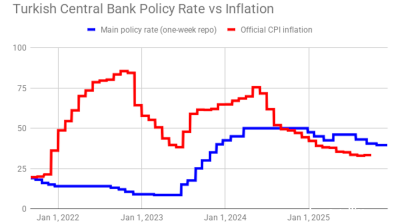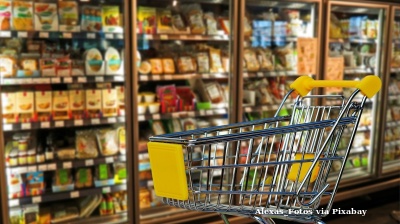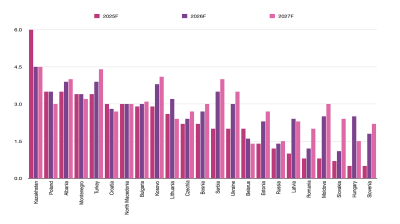The growth of the Czech consumer prices indices (inflation) slowed to 6.9% year on year and decreased by 0.7% month on month in September. It is 1.6 percentage points down on August inflation.
The moderation was better than expected by market analysts, including the Czech National Bank’s (CNB) forecast, prompting more speculation that the CNB may lower interest rates at its November board meeting. These have been at 7% since last spring.
However, inflation still remains high above the CNB’s 2% target level.
“Consumer prices moderated their y/y growth for the eighth time and fell below 7%. It was the lowest value since December 2021,” commented Pavla Sediva, head of the Consumer Price Statistics Unit at the Czech Statistical Office (CZSO), on the September figures.
ING Czech Republic stated that the September slowdown “opens the door to a rate cut in November”, while adding that y/y “this number should be this year’s low given the base effect in the coming months.”
“Inflation has dropped below the nominal wage growth for the first time in a long time,” UniCredit Bank’s economist Patrik Rozumbersky pointed out for Czech Press Agency, expecting households’ income to increase again.
The positive development came mainly from drops in the sectors of recreation and culture, food and non-alcoholic beverages, and housing, water, electricity, gas and other fuels.
In recreation and culture, prices of package holidays went down by 21.9% m/m, reflecting the end of the summer season. In food and non-alcoholic beverages, prices of fruit decreased by 3.8%, vegetables by 2.9%, eggs by 9.2%, semi-skimmed milk by 8.3%, pork meat by 1.8%, oils and fats by 2.2%, smoked meat and sausages by 1.1%, and cheese and curd by 1%.
In housing, water, electricity, gas and other fuels, prices of natural gas decreased by 3.6%, electricity by 2%, and solid fuels by 1.3%.
M/m increases in prices were registered mainly in the sector prices of fuels and lubricants for personal transport equipment (2.8%) and were also registered in clothing and footwear, while the new start of the school year drove prices in education up by 5.8%.
Y/y, the most significant price growth was registered in housing, water, electricity, gas and other fuels, where prices of actual rental climbed by 7.9%, water supply by 16.3%, sewage collection by 26.9% and heat and hot water by 36.2%.
Data

Turkey's central bank remains cautious, delivers 100bp rate cut
Decision comes on eve of next hearing in trial that could dislodge leadership of opposition CHP party.

Polish retail sales return to solid growth in September
Polish retail sales grew 6.4% year on year in constant prices in September, picking up from a 3.1% y/y rise in August, the statistics office GUS said.

Uzbekistan’s nine-month foreign trade nears $60bn
Export growth of 33% and import expansion of 16% y/y produce $6.4bn deficit.

Hungary’s central bank leaves rates unchanged
National Bank of Hungary expects inflation to fall back into the tolerance band by early 2026, with the 3% target sustainably achievable in early 2027 under the current strict policy settings.




